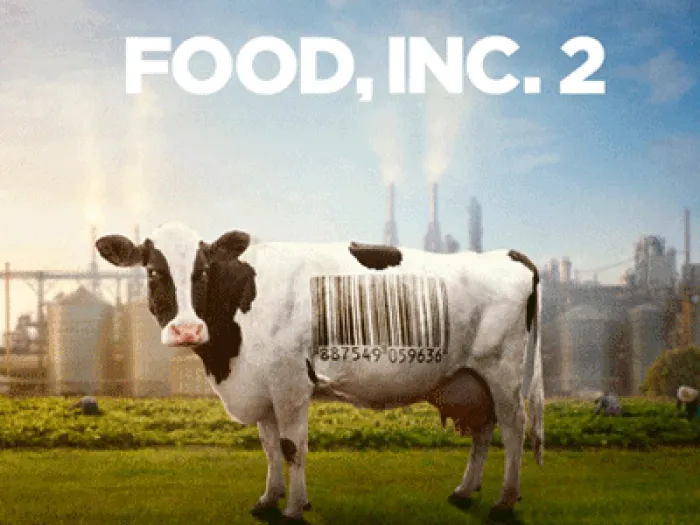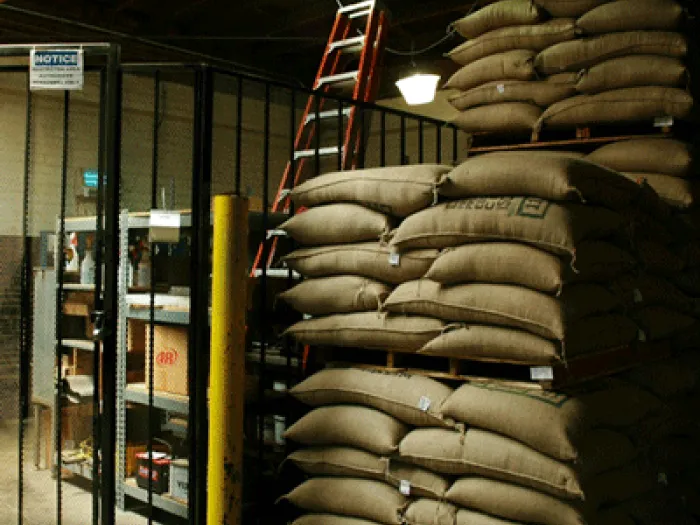Food, agriculture, and organizing for our lives
Budget cuts are putting a real strain on the nation’s safety net

"We have confused convenience with access, abundance with security. True food security comes from a just food system that puts power back in the hands of communities."
— Malik Yakini, Detroit Black Community Food Security Network
At a time when corporate giants and billionaires wield unprecedented power over our food system, building community resilience is more urgent than ever. Malik Yakini’s words remind us that true food security isn’t just about abundance—it’s about justice, equity, and local control. To chart a better future, we first need to take stock of where we are and how we got here.

Where are we?
In Louisville, Kentucky, a coalition of organizations including the Presbyterian Hunger Program has worked together to make great strides toward a better food system. The newly established Greater Louisville Food Council and its multi-year strategic plan, Food Vision 2030, emerged from over two years of extensive community input. With a roadmap in place, this coalition was eager to apply for a USDA implementation grant to bring these plans to life.
But like so many other government programs, that funding has vanished.
Across Kentucky and the nation, farmers are scrambling to find new markets — or worse, choosing not to plant at all — after losing the opportunities they relied on when they ordered seeds and supplies. Nonprofits and government agencies that provide land access, technical assistance, and essential farm support programs are now struggling to retain staff as their funding runs out.
The situation is just as dire in Hawai’i, where our One Great Hour of Sharing program supports four food sovereignty groups. According to the Oʻahu Resource Conservation and Development Council, the Trump administration has frozen or cut nearly $90 million in funding for farms and food system organizations across Hawai’i and the Pacific region.
“Farmers here are in survival mode,” says Kaina Makua, a taro grower on Kauai. Many are scaling back, unsure how they’ll make up for the losses. To make matters worse, the possible closure of Farm Service Agency (FSA), Natural Resources Conservation Service (NRCS), and Rural Housing Service (RHS) offices across the U.S. could wipe out crucial research, support, and financial assistance that thousands of farmers depend on.
Strain on the safety net
These funding losses are not just hurting farmers—they are putting additional pressure on food banks, which are already stretched thin.
In Pennsylvania, for example, the Greater Pittsburgh Community Food Bank expects to lose $1.6 million annually, translating to a loss of approximately 2.9 million pounds of food — including essentials like eggs, milk and meat from local farms. With more than 200 large food banks and 60,000 partner agencies nationwide, this crisis is unfolding on a massive scale.
The impact on schools and child nutrition
Schools and childcare centers are also reeling from funding cuts.
The Local Food for Schools (LFS) Cooperative Agreement Program, launched by the USDA in 2022, allocated $200 million to states to purchase local food for school meal programs. In December 2024, an additional $660 million was announced to expand the program to early care settings, reinforcing a more resilient food system and providing nutritious meals to children.
But in March 2025, these funds were abruptly eliminated due to budget cuts imposed by the Department of Government Efficiency. The USDA terminated both the LFS and the Local Food Purchase Assistance (LFPA) Cooperative Agreement Program, stripping schools and childcare centers of $660 million in expected food funding for 2025. This decision also disrupts a vital revenue stream for small farmers, many of whom supplied produce to schools and food banks.
These cuts are shortsighted. Over the past three years, LFPA investments of $864 million into local communities have generated an estimated $1.8 billion in economic impact. By eliminating these programs, we are not only worsening food insecurity but also damaging local economies.
What about the Supplemental Nutrition Assistance Program?
The U.S. House of Representatives has proposed a budget resolution that includes more than $1 trillion in federal spending cuts, with significant reductions targeting SNAP and Medicaid. These cuts could have devastating consequences:
- At least 1 million jobs lost nationwide
- A $113 billion decline in state gross domestic products by 2026
- A reduction in average daily SNAP benefits to just $5 per participant
With today’s grocery prices, can you imagine trying to feed yourself and your family for only $5 a day per person?
As always, the most vulnerable will suffer the most. These cuts would disproportionately impact rural communities, people of color, people with disabilities, women, LGBTQ individuals, and formerly incarcerated people —groups already facing systemic barriers to economic security.
Who is hurt and how?
- People with disabilities: Over 9 million non-elderly Americans with disabilities rely on SNAP, as their job opportunities are limited and living expenses are higher.
- Rural communities: SNAP participation is higher in rural areas (14%) than in urban areas (11%). Each $1 spent on SNAP generates $1.54 in economic activity — meaning these cuts will harm local businesses and communities.
- People of color: Black and Latino workers face higher unemployment rates and are more likely to be food insecure despite being employed.
- Women: Women make up two-thirds of the low-wage workforce and often have unstable work schedules. Many are also unpaid caregivers, making them especially vulnerable to benefit reductions.
- LGBTQ Individuals: LGBTQ people are twice as likely as non-LGBTQ individuals to use SNAP due to employment discrimination and wage disparities.
- Formerly Incarcerated Individuals: With an unemployment rate of 27%, people re-entering society after incarceration rely on SNAP as a lifeline. Removing benefits could increase recidivism rates.
Don’t panic — organize!
Millions of people — farmers, workers, children, and families — are feeling the effects of these devastating cuts. And it’s not just food: similar crises are unfolding in environmental, health, housing, and education sectors. This isn’t just an attack on food security; it’s an attack on our collective well-being and democracy itself.
Now is the time to act. Seek out and support local food justice organizations in your community. Stand with farmers. Demand policy changes. Use your time, voice, and resources to fight for a just food system.
We must build the broadest and boldest movement this country has ever seen — to protect vulnerable communities, uphold democracy, and safeguard our nation’s future.
Write Congress today to protect anti-hunger programs via the Presbyterian Office of Public Witness.
Andrew Kang Bartlett is National Associate for the Presbyterian Hunger Program.
You may freely reuse and distribute this article in its entirety for non-commercial purposes in any medium. Please include author attribution, photography credits, and a link to the original article. This work is licensed under a Creative Commons Attribution-NonCommercial-NoDeratives 4.0 International License.




